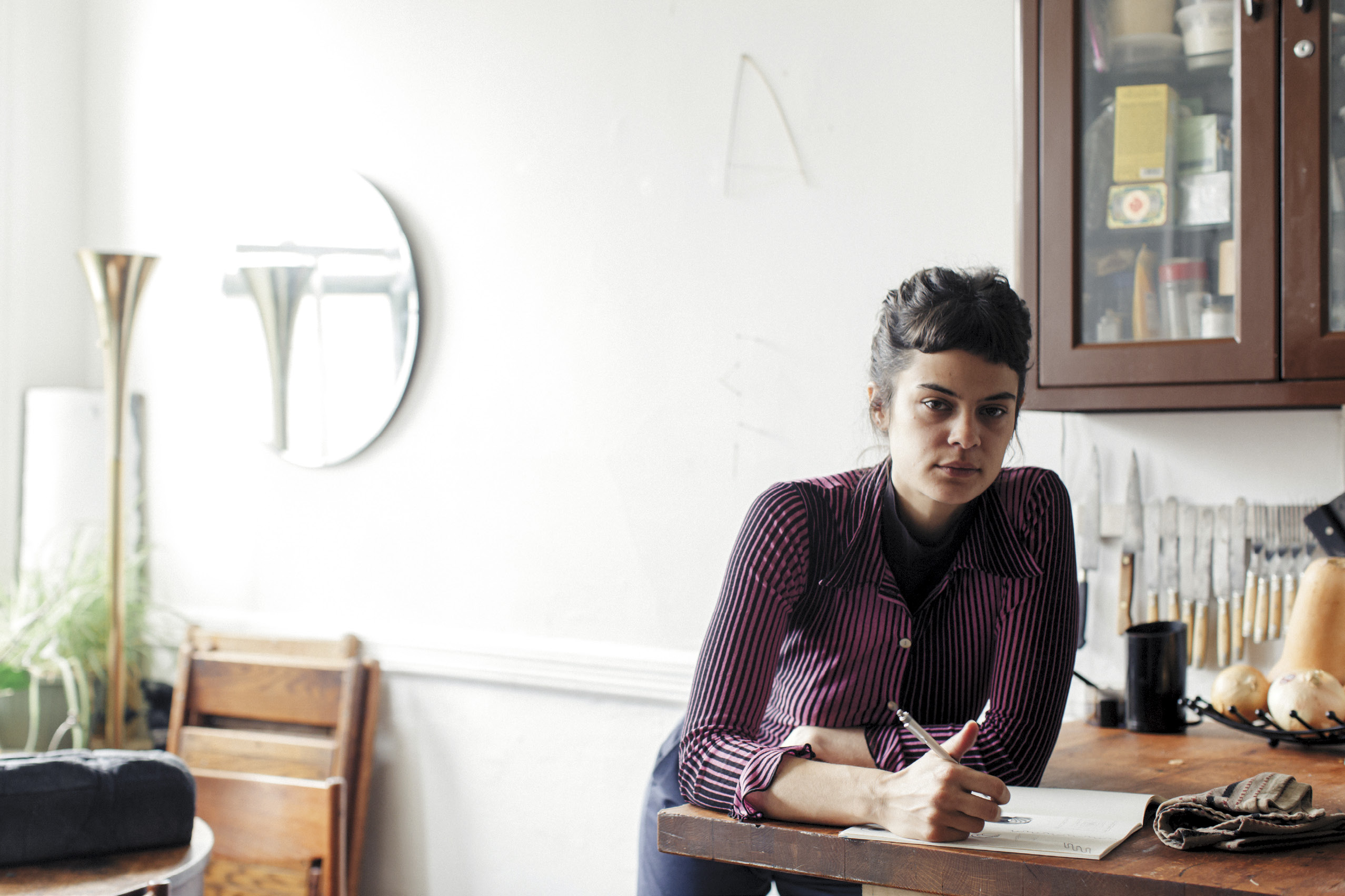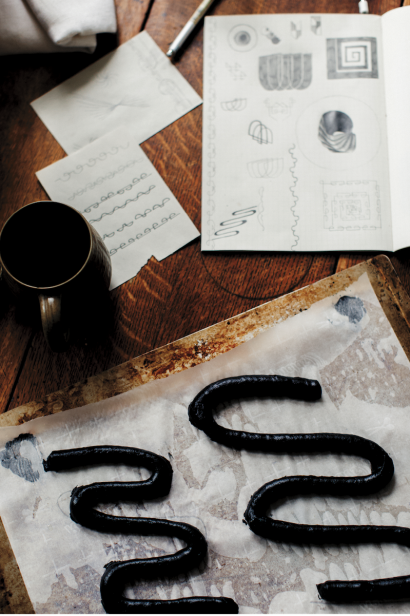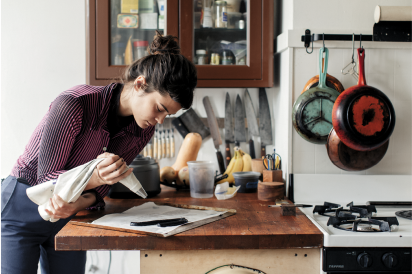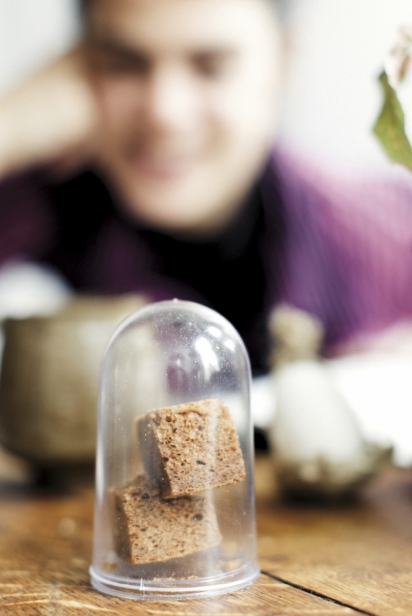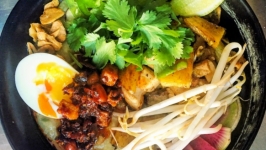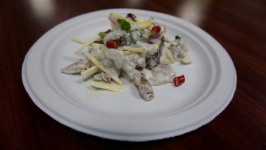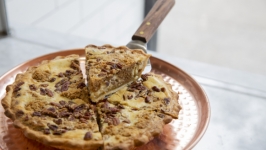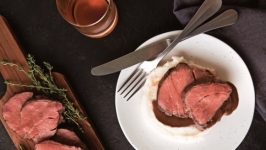Bread that’s Not Just for Eating: Lexie Smith Crafts Extraordinary Loaves
Lexie Smith, an artist-baker hybrid, bakes head-turning art bread in her kitchen-cum-studio in Ridgewood. On any given day, her Instagram may evidence creations such as phyllo paper cranes, a dubious, twisted lizard shaped from purple corn flour, or Neapolitan-bright beet and carrot naan doughs, “sewn together on the tawa.” Sometimes the bread is sculpted, figurine-like, braided or dyed, like a recent pâte à choux (light pastry dough) made with activated charcoal—and it’s all edible.
Smith studied art history and studio art at New York University, and has racked up almost a decade of experience as a pastry chef and baker. She has worked in celebrated New York City kitchens, as well as in Marfa and Austin, Texas, and on a farm in Hawaii. Multifaceted (her job title on LinkedIn is “Multi-person”), she has difficulty describing what she’s currently doing, and well, she tries not to.
“There’s a lot of stress and anxiety attached to the medium [baking] for some reason and that just doesn’t fit into how I care about it,” says Smith.
Needless to say, she doesn’t feel comfortable with “baker” as an identity, and though she grew up rejecting the artist’s identity too, she’s also a designer, illustrator, art director and writer. But it’s her upended interpretations of bread that she’s best known for, and what’s garnered coverage in publications like Vogue and The New York Times.
Around three years ago, Smith began experimenting with the theme of indigestion: “I have to find a way of making that beautiful or compelling because that’s something I live with,” she says, referring to bouts of acid reflux, gastritis and discomfort she and her similarly plagued twin sister call “Smithaches.” That led to canvas-based works painted with egg whites and sugar, a foray into food as medium.
Not long after, she was invited to participate in a group show in SoHo. Told she could produce whatever she wished, she baked sourdough loaves and fashioned them into towers. Smith encouraged people to consume her work, and by the end of the show, all that remained were crumbs and mess.
It was a beginning. Since then, she’s continued to play with bread as a structure; in December, she created an installation in Berlin—a floating simit forest made of the Turkish sesame rings, reflecting the largest resettled community in Germany of Turkish immigrants.
When I meet Smith at her home, she tells me about the dinner party she hosted the night prior, with 15 friends—how she’d rolled out handmade tortillas and stored them in the fridge, but when it came time to cook them, they all stuck together, prompting a “slow motion breakdown.”
“Then we figured out how we could salvage them,” she said. “Put them in a freezer for a second on the wax paper.” In regards to the emotional breakdown: “Afterwards I’m embarrassed by it,” she says, “but I’m just a pretty honest person and not necessarily in a good way, but in the way of like I must put my emotions on to you because I am feeling them, thus you must also feel them… I think that cooking is a way of dealing with social anxiety. I think it’s why I started cooking.”
Smith moved to Ridgewood about a year and a half ago, and her love for Queens is palpable. She has plans to start a sliding-scale fruit and vegetable stand that peddles coffee—the longer you’ve lived in the neighborhood, the steeper your discount.
“I’ve lived all over New York; I’ve always felt very antsy,” she says. “And then I moved here and… these locals, the way they interact with me and each other, it just makes me really happy, and comfortable. I’ve found that since moving to Queens I’ve become so much more productive because I feel incubated here.”
You can’t buy her bread wholesale, and her gallery shows are sporadic, but encountering Smith’s work in person is as simple as reaching out—she does commissions; she especially does more conceptual commissions. In the day-to-day, you can watch her work grow and evolve online, with her multimedia art project, “Bread on Earth,” an exploration of what bread means across cultures.
“I think of it like the river Bread, and the delta coming off of it, where there’s innumerable streams that allow for very diverse conversation. I have the tendency to fracture and want to go everywhere at once and I somehow found bread to be a way for me to look through a single lens and be able to see a lot of things up close.”
Lexie’s Queens Picks:
I care about using good, socially and environmentally conscious ingredients. A lot of the places I look to for research purposes for the regional bread specialties that I work with are all in Queens. I just love that I live in a place where I can hop borders just by getting on the train or the bus.
I go to Jackson Heights a lot for Indian supplies, even just Patel Brothers. There’s a place called Parrot Coffee in Sunnyside that I love; they have the most incredible apricots I’ve ever had in my entire life. Around here there’s a place called Morscher’s Pork Store which has everything—I don’t eat meat so much anymore but when I do I’ll get it from there, and they’ll walk you through the hundred varieties that are hanging on the wall.


